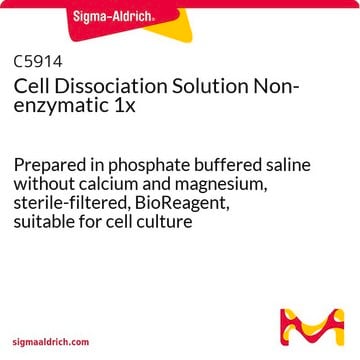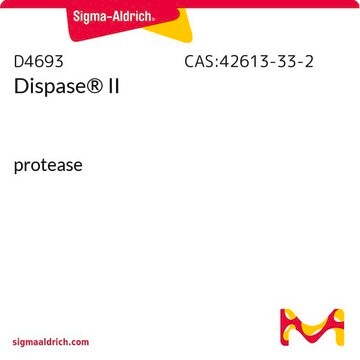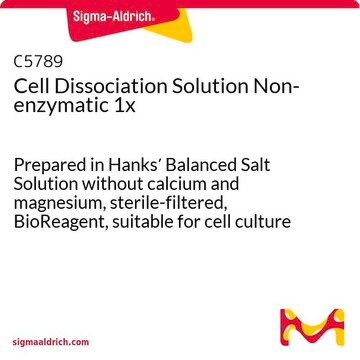A7089
Accumax™ solution
sterile-filtered, suitable for cell culture
Synonym(s):
Cell detachment solution
About This Item
Recommended Products
sterility
sterile-filtered
Quality Level
form
solution
concentration
1 ×
technique(s)
cell culture | mammalian: suitable
single cell analysis: suitable
pH
6.8-7.8
shipped in
dry ice
storage temp.
−20°C
Application
- for detaching single walled carbon nanotubes from the extracellular matrix (ECM) in epithelial cells
- for dissociation of retinal pigmented epithelial cells prior to passaging
- for dissociation of islets from pancreas
Biochem/physiol Actions
Features and Benefits
Caution
Formula variant
Preparation Note
Legal Information
related product
Storage Class Code
10 - Combustible liquids
WGK
WGK 2
Flash Point(F)
Not applicable
Flash Point(C)
Not applicable
Choose from one of the most recent versions:
Certificates of Analysis (COA)
Don't see the Right Version?
If you require a particular version, you can look up a specific certificate by the Lot or Batch number.
Already Own This Product?
Find documentation for the products that you have recently purchased in the Document Library.
Customers Also Viewed
Articles
Lung organoids are valuable 3D models for human lung development and respiratory diseases. The 3dGRO™ differentiation protocol generates organoids from human iPSCs in 4 steps.
Use of MULTI-seq lipid-modified oligos, protocol, and troubleshooting guide for PCR Assays and Sequencing applications.
The Simplicon™ RNA Reprogramming Technology is a next generation reprogramming system that uses a single synthetic, polycistronic self-replicating RNA strand engineered to mimic cellular RNA to generate human iPS cells.
Our team of scientists has experience in all areas of research including Life Science, Material Science, Chemical Synthesis, Chromatography, Analytical and many others.
Contact Technical Service













